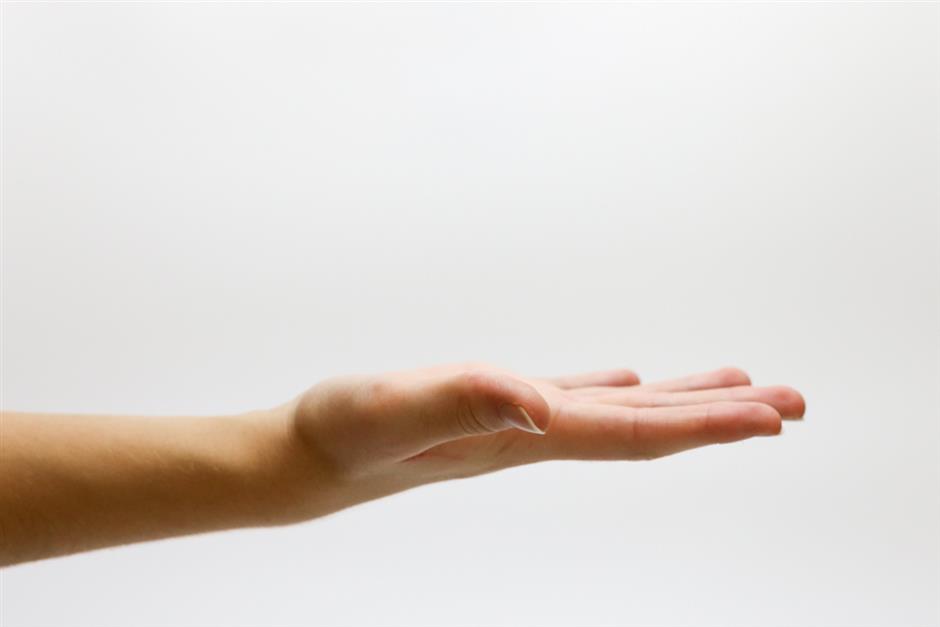
It’s time to prepare dinner, and you want to find out how many grams of each macro you’ve got left to work with.
You open your tracking app and …
… error message. The system is down.
Uh oh.
Or, while out to dinner with friends, your phone battery dies before you can log your meal into your app.
Advertisement
Then again maybe you’re the outdoorsy type and find yourself without cell service while camping in the middle of the woods with family.
… What now? How will you continue making progress toward your goals?
No need to panic! We’ve got you covered.
If you are unable to track your food for some reason, that’s okay. Part of the journey of working with a nutrition coach is learning valuable skills that go beyond just entering your food into an app and attempting to hit your target macros.
So, rather than view this situation as a problem, look at it as an opportunity to practice the skills you have been working so hard to develop. You can trust yourself!
Advertisement
There are two major approaches to handling a faulty tracking app and the right approach depends on your goals at the time.
If you aren’t on a specific timeline or deadline for your goals, we suggest adopting intuitive eating to work for you.
Alternatively, there might be a specific reason why you need to be more precise with your food intake.
For example, perhaps you have a competition in two weeks where you need to reach a certain body weight in order to compete. Or perhaps a special event (like a wedding or a beach vacation) is quickly approaching, and you want to look and feel your best for that event.
If that’s the case, you might want to consider an alternative way of keeping track of your food. Read option #2 below for information on how to do that.
Advertisement
You can also pick and choose to follow parts of both options described below, based on what feels right for you!
So let’s dive in!
Intuitive eating
If your tracking app is unavailable, it’s easy to feel stressed and a little lost. However, we encourage you to look at this situation as an opportunity to feel empowered—you are more than just numbers on a screen!
Tracking macros can absolutely help guide us toward our goals, but it isn’t intended to be something we do for the rest of our life.
When we are not tracking, it is an opportunity to connect with our bodies, notice our hunger signals, and practice the WAG skills we have learned!
Advertisement
Here are some guidelines you can follow when practicing intuitive eating:
- Build your plate: Start by working on building a balanced plate at each of your meals. Make sure that your plate includes a source of protein, as well as carbohydrates and fats. Aim to make your diet come from 80–90 percent whole, unprocessed, nutrient-dense foods, with a bit of room for foods that simply satisfy a craving.
- Get in touch with your body: Pay close attention to your hunger signals. Are you feeling extra hungry today? Then choose more filling, high-volume foods with more fiber and water content (veggies!). Eat when you feel truly hungry, and stop eating when you are satisfied.
- Go on a “date” with your food: Eat your meal without distractions—treat your food as if you were on a date and give it your full, undivided attention. Make sure you take the time to chew your food slowly and thoroughly.
Estimating portions and/or finding a different way to keep track of food
If you need to maintain a higher level of precision with your tracking due to an upcoming event, no need to worry—this is a chance to practice and refine your estimation skills!
We do not always have access to our food scale, and that’s okay. Part of any macro-tracking program is learning how to handle situations where we need to estimate portions.
Here are some guidelines and suggestions for how to estimate your food and keep track of it in an alternative manner:
- Use your hand: You have an excellent tool at your disposal for estimating portions—and it’s located at the end of your arm!
- Trust your eyes: If you have weighed out certain foods many times on your food scale, chances are that you are quite good at recognizing what your usual portion size looks like. This is a perfect opportunity to bust out those estimation skills!
- Stick with what you know: When estimating your food, choose foods you are familiar with. You know these foods will fit into your balanced day of eating.
Consider avoiding foods that, based on past experience, you know are more difficult to fit into your macros (in other words, if you couldn’t fit the double cheeseburger into your macros last week, chances are it will still not fit today).
Advertisement
- Think about your day of eating as a whole: Perhaps at breakfast, you enjoyed a generous portion of avocado with two whole eggs. Because this meal contains a significant amount of fat, you may want to consider keeping your fat intake slightly lower throughout the rest of your day. Aim to eat in a similar way to how you normally do when you are tracking.
- Go “old school”: For even more precision, consider writing down your food by hand, using a pencil and paper.
- Try a different app: If you do have access to your phone (or a desktop computer) and WiFi, you can try out a different tracking app, or use a website like CalorieKing.com.
- Take a picture: If you would like to go back into your tracking app after the fact and enter your food, consider taking photos of your meals using your phone’s camera.
While we’re presenting two different approaches, there’s no harm in following parts of each! You can always test out the tips to see what works for you, or turn to a one-on-one nutrition coach if you have questions about what you should do!
Remember that one day, or even one week, of not tracking all your food will not make or break your progress. Trust yourself and use one of the options above for staying on track toward your goals.
Schedule a Free Intro Call
Working Against Gravity has led the macro tracking and health space for over a decade. Our team doesn’t just understand the science of nutrition—we’ve spent years mastering the art of tailoring it to fit your life. That means no cookie-cutter plans, just real strategies that have worked for over 30,000 people.
Schedule a free call with our team to learn how working with a 1-on-1 WAG coach will help you reach your goals.



